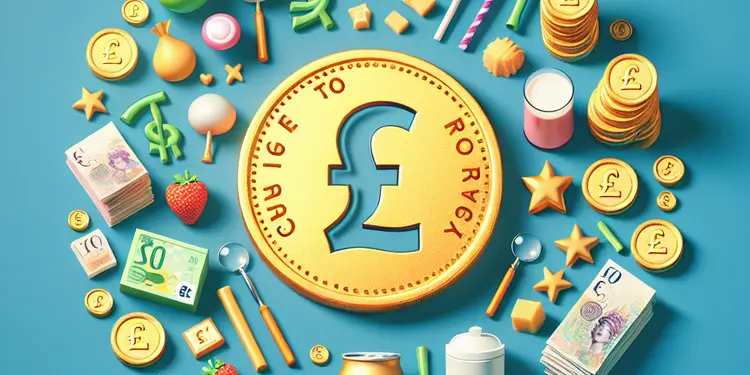
Find Help
More Items From Ergsy search
-
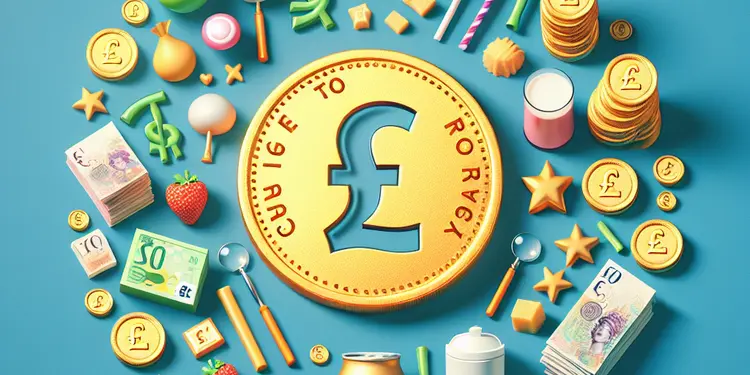
What are the long-term goals of the sugar tax?
Relevance: 100%
-
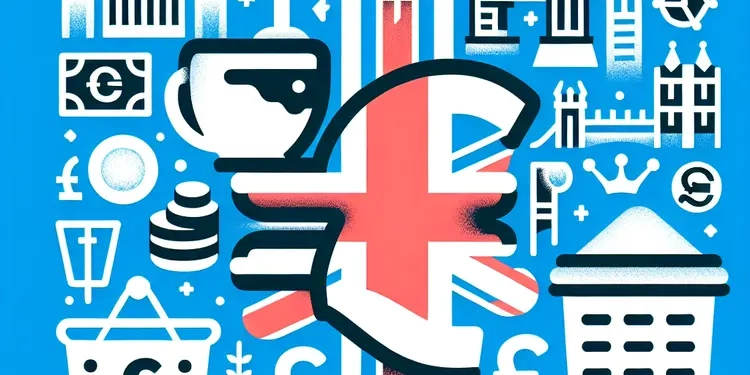
What is the sugar tax in the UK?
Relevance: 60%
-
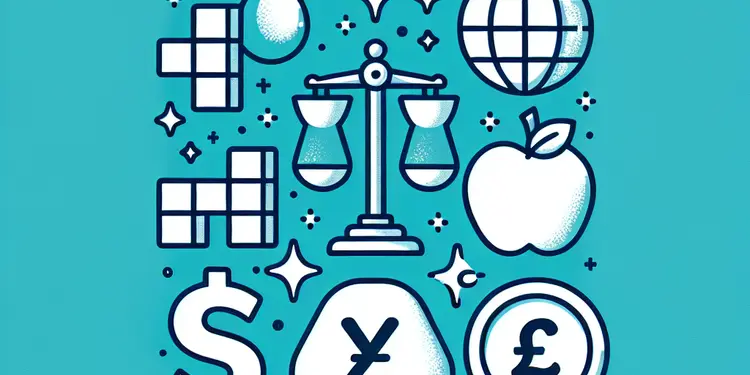
What is the purpose of the sugar tax?
Relevance: 54%
-
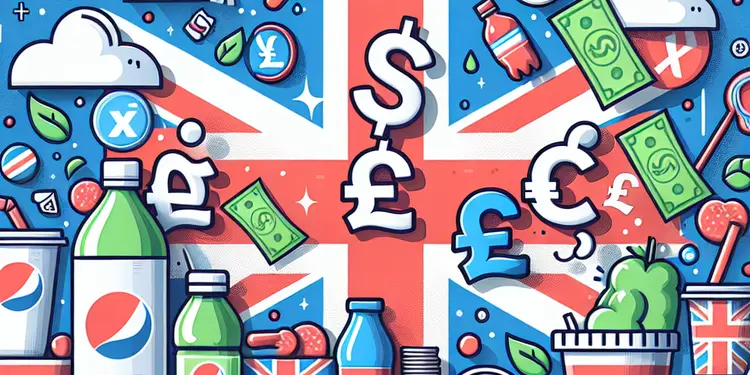
Is the sugar tax applied to diet or zero sugar drinks?
Relevance: 53%
-
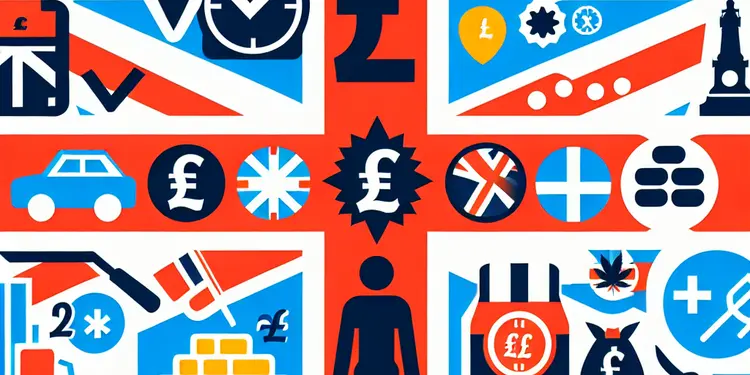
How does the sugar tax align with public health strategies?
Relevance: 53%
-
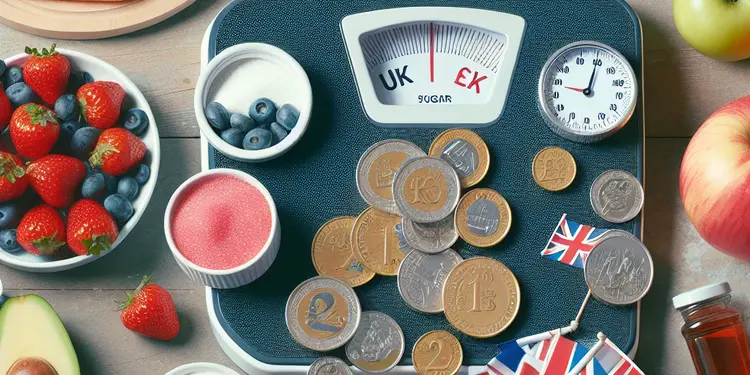
What impact has the sugar tax had on obesity rates?
Relevance: 53%
-
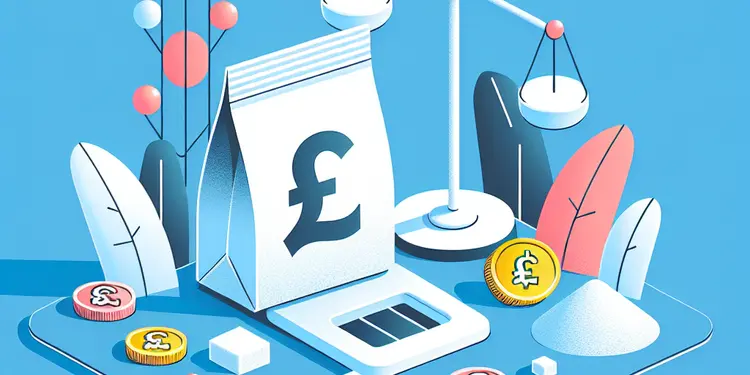
Who pays the sugar tax?
Relevance: 52%
-

Has the sugar tax affected the sugar content in drinks?
Relevance: 52%
-
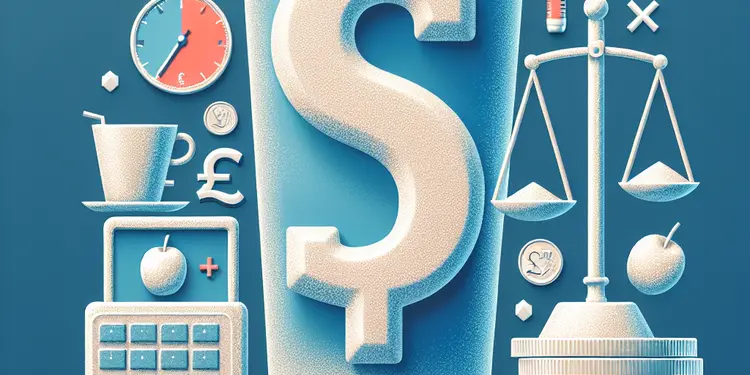
Has the sugar tax been effective?
Relevance: 52%
-
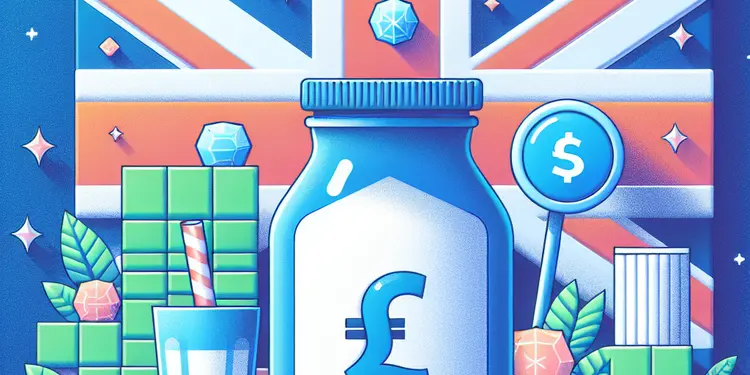
How does the sugar tax affect consumers?
Relevance: 49%
-
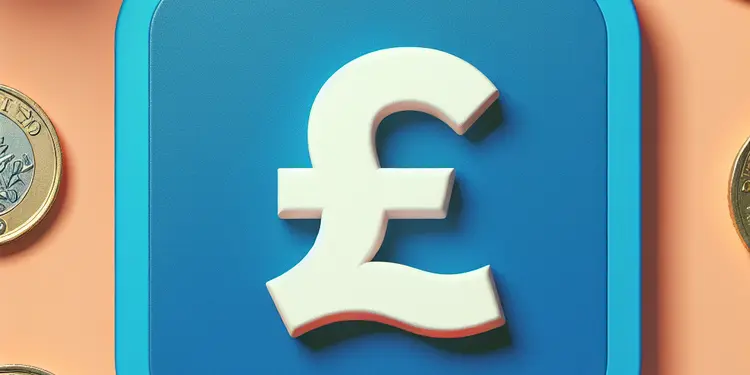
How is the revenue from the sugar tax used?
Relevance: 49%
-
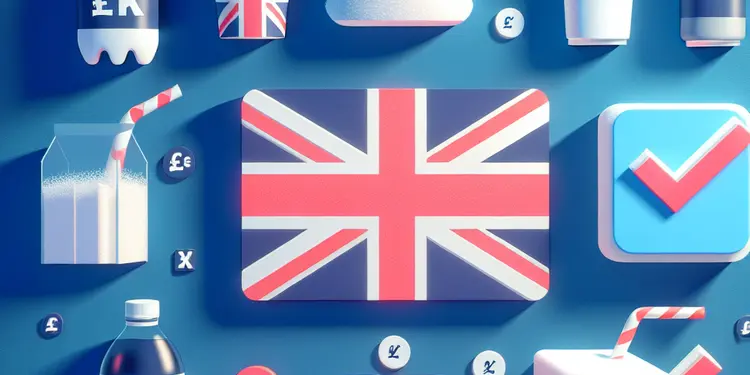
Which drinks are exempt from the sugar tax?
Relevance: 49%
-

Does the sugar tax apply to small businesses?
Relevance: 48%
-
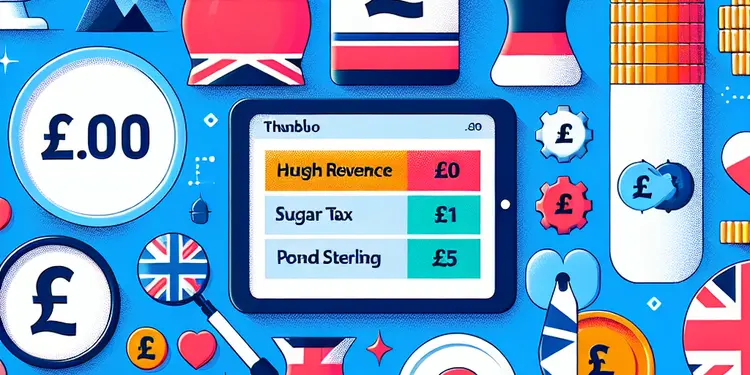
How much revenue has the sugar tax generated?
Relevance: 47%
-
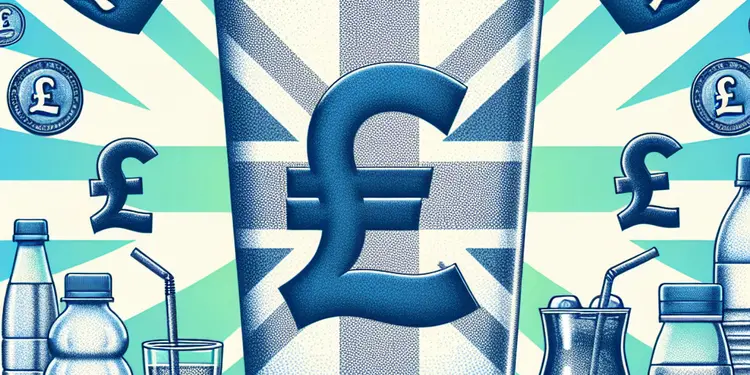
Has the sugar tax led to innovation in the drinks industry?
Relevance: 46%
-
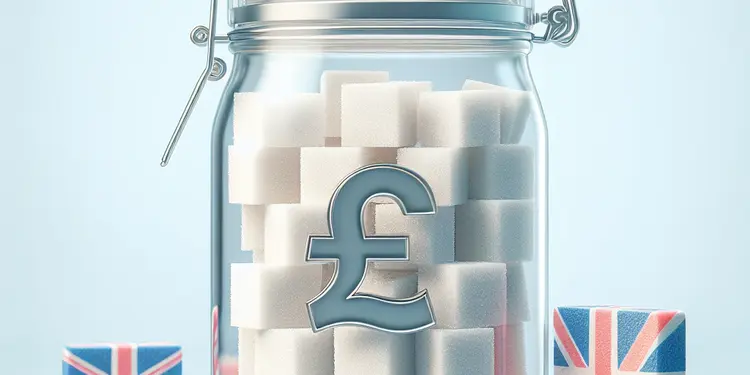
When was the sugar tax introduced in the UK?
Relevance: 40%
-
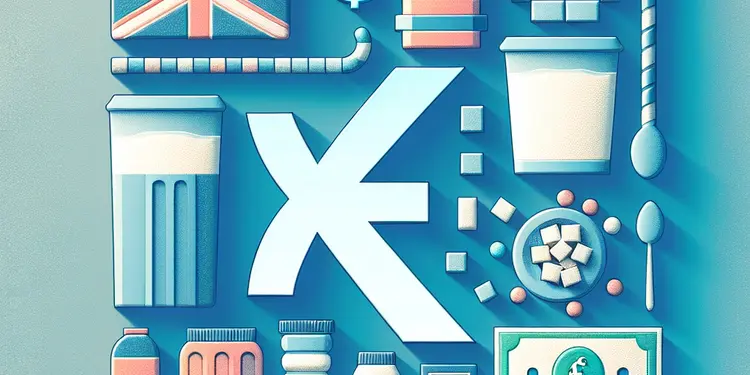
How is the sugar tax applied?
Relevance: 39%
-
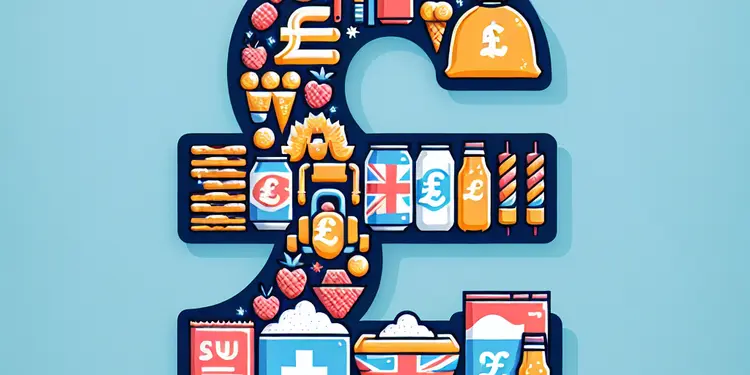
What are the rates for the sugar tax?
Relevance: 38%
-
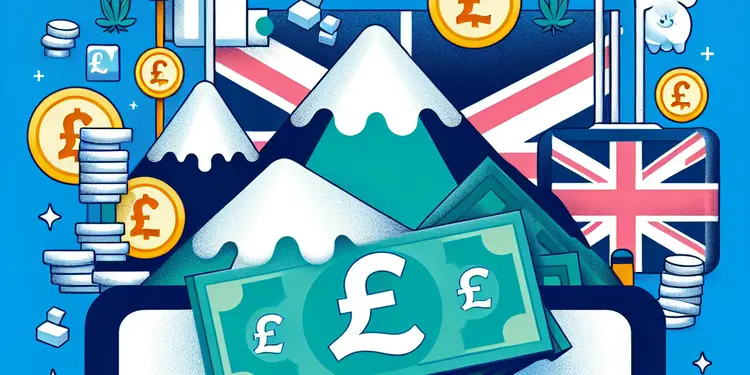
Have any other countries implemented a sugar tax similar to the UK?
Relevance: 31%
-

Are there any long-term effects of using Ozempic?
Relevance: 31%
-
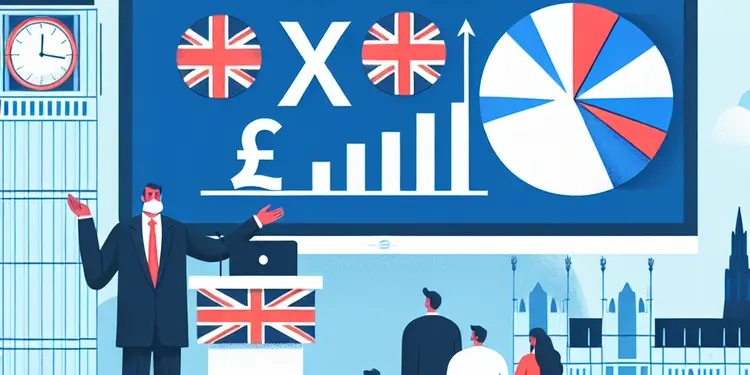
Chancellor Unveils Plans to Reform UK Tax System
Relevance: 27%
-
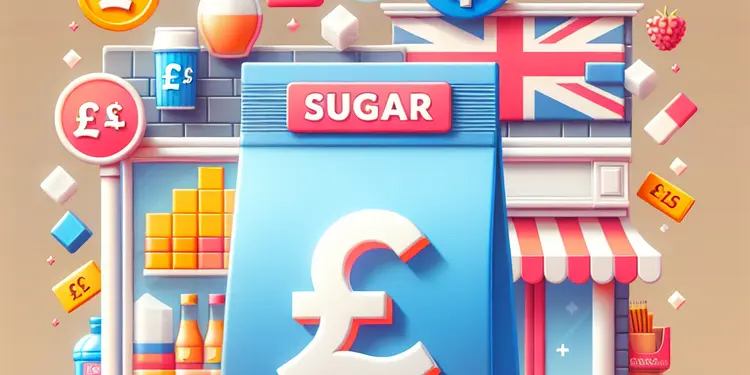
Are there any criticisms of the sugar tax?
Relevance: 26%
-

Can Ozempic cause low blood sugar (hypoglycemia)?
Relevance: 26%
-

Can Baxdrostat affect blood sugar levels?
Relevance: 25%
-

Would a wealth tax replace other taxes in the UK?
Relevance: 25%
-

Could a wealth tax encourage tax avoidance?
Relevance: 25%
-
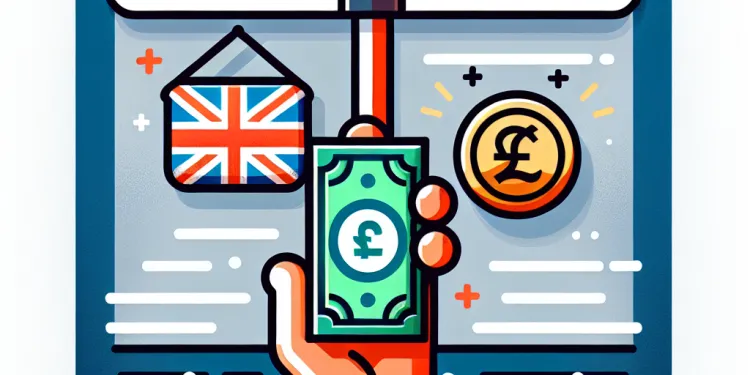
How does a wealth tax differ from an income tax?
Relevance: 25%
-

What is the objective of a wealth tax?
Relevance: 25%
-
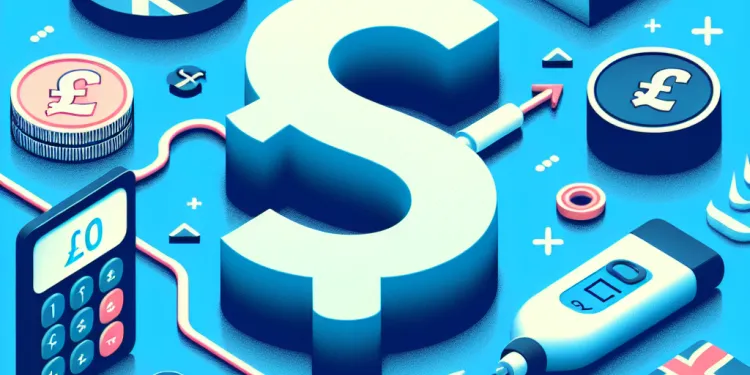
How does Ozempic affect blood sugar levels?
Relevance: 25%
-

What is the wealth tax in the UK?
Relevance: 24%
-

What are the long-term effects of a heart attack?
Relevance: 24%
-
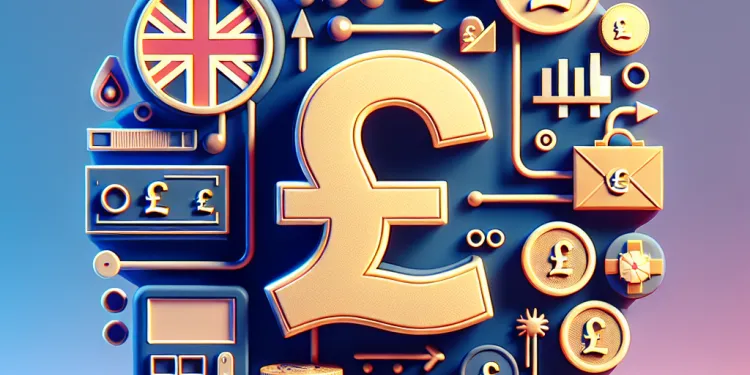
Are there any long-term effects of gonorrhoea?
Relevance: 24%
-
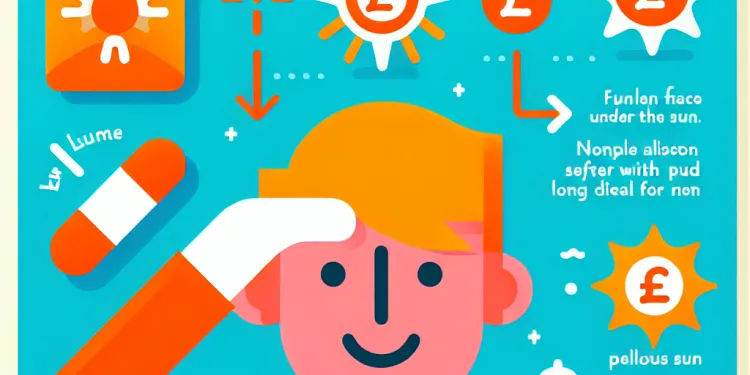
What are the long-term effects of sunburn?
Relevance: 24%
-
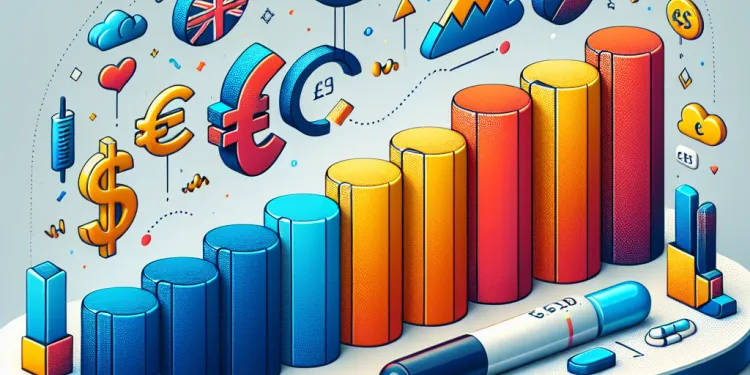
How effective is Mounjaro in controlling blood sugar levels?
Relevance: 24%
-

Could a wealth tax affect economic growth in the UK?
Relevance: 24%
-
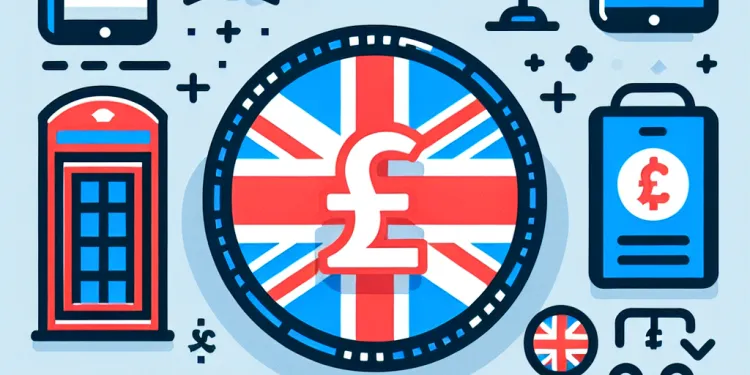
Does ketamine have long-term effects?
Relevance: 24%
-
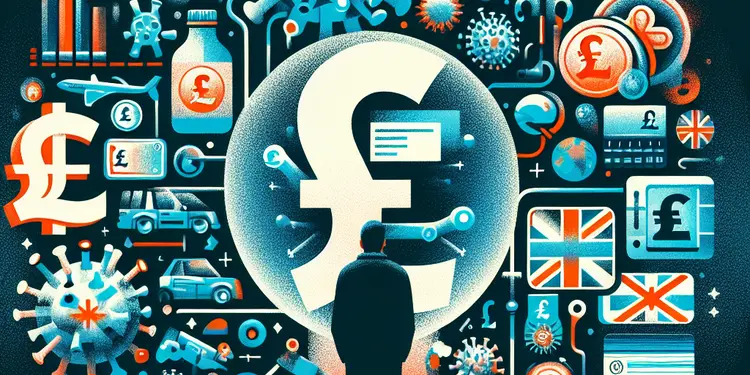
Can meningitis cause long-term complications?
Relevance: 23%
-

Is postnatal depression a long-term condition?
Relevance: 23%
-

Are there any long-term effects of using Botox?
Relevance: 23%
-

Can a wealth tax impact economic behavior?
Relevance: 23%
Introduction to the Sugar Tax
The sugar tax, officially known as the Soft Drinks Industry Levy, was introduced in the UK in April 2018. This initiative represents a strategic public health measure aimed at reducing the consumption of sugary drinks. The tax levies charges on producers and importers of soft drinks based on the sugar content of their products. While this measure addresses immediate health concerns, the long-term goals of the sugar tax extend beyond immediate fiscal impacts and aim at fostering a healthier society.
Reducing Sugar Consumption
One of the primary long-term goals of the sugar tax is to significantly reduce sugar consumption among the UK population. Excessive sugar consumption is a major contributing factor to numerous health issues, including obesity, diabetes, and tooth decay. By making sugary drinks more expensive, the tax incentivizes consumers to choose healthier, lower-sugar options. Over time, this shift in consumer behavior is expected to lead to a noticeable decline in sugar intake, alleviating some of the public health burdens associated with high sugar diets.
Promoting Healthier Lifestyles
The sugar tax is also intended to stimulate a broader cultural shift towards healthier lifestyles. As sugary beverages become less financially attractive, it encourages producers to reformulate their products, reducing sugar levels to avoid the levy. This reformulation can expand into other food sectors, promoting a wider availability of healthier options across the market. Over time, the tax aims to instill long-term dietary changes within the population, fostering an environment where healthier choices are the norm.
Mitigating Obesity and Related Diseases
Obesity and related diseases, such as type 2 diabetes and heart diseases, have long been a concern for public health officials in the UK. One of the overarching long-term goals of the sugar tax is to combat these issues by targeting one of their root causes. By reducing the consumption of empty calories from sugary drinks, the tax aids in decreasing the prevalence of obesity. This, in turn, can lead to a reduced incidence of associated non-communicable diseases, lessening the strain on the healthcare system.
Generating Revenue for Health Initiatives
Lastly, while encouraging healthier consumption habits, the sugar tax also generates additional government revenue. This funding can be allocated to various health initiatives, particularly those focused on children's health and nutrition education. By investing in these areas, the government can amplify the impact of the sugar tax, supporting long-term public health improvements and fostering an informed population that prioritizes healthful choices.
What is the Sugar Tax?
The sugar tax is a special rule in the UK. It started in April 2018. It means companies pay more money if their drinks have lots of sugar. This is to make people drink less sugary drinks and be healthier.
Cutting Down on Sugar
The goal of the sugar tax is to help people in the UK eat and drink less sugar. Too much sugar can make people sick, causing problems like obesity (being very overweight), diabetes, and cavities in teeth. By making sugary drinks cost more, people might choose drinks with less sugar instead. Over time, this means people will have less sugar and be healthier.
Helping People Live Healthier
The sugar tax wants to change how people think about food and drinks. If sugary drinks cost more, companies might make them with less sugar. This means there will be more healthy products for everyone. The idea is that people will choose to eat and drink healthier things all the time.
Fighting Obesity and Other Diseases
Many people in the UK are worried about diseases like obesity and diabetes. The sugar tax helps by trying to stop one cause of these problems—too much sugary drinking. When people drink less sugar, they can be healthier, and there will be fewer people getting sick.
Using Money to Help Health Projects
The sugar tax also helps the government collect more money. This money can be used to teach kids about healthy eating and support health projects. By spending the money this way, the government hopes more people will learn to make healthy choices.
Frequently Asked Questions
What are the primary long-term goals of implementing a sugar tax?
The primary long-term goals of implementing a sugar tax are to reduce the consumption of sugary drinks and foods, decrease the prevalence of obesity and related health conditions, generate revenue for public health initiatives, and promote healthier dietary habits.
How does a sugar tax aim to reduce obesity rates in the long term?
A sugar tax aims to reduce obesity rates by discouraging the consumption of high-sugar products, leading to lower calorie intake and, consequently, a reduction in body weight and obesity prevalence over time.
Can a sugar tax help lower the risk of diabetes?
Yes, by reducing the consumption of sugary beverages and foods, a sugar tax can contribute to lowering the risk factors for type 2 diabetes, improving population health outcomes in the long term.
How does a sugar tax contribute to better dental health?
A sugar tax discourages excessive sugar consumption, which is a major cause of dental caries and tooth decay, thereby promoting better dental health in the long term.
What is the expected impact of a sugar tax on public health systems?
In the long term, a sugar tax is expected to lessen the burden on public health systems by reducing the incidence of sugar-related health conditions, such as obesity, diabetes, and heart disease.
How might a sugar tax influence consumer behavior over time?
Over time, a sugar tax is expected to influence consumer behavior by encouraging individuals to choose healthier alternatives due to the increased cost of sugary products, shifting demand towards nutritious options.
What are the potential economic benefits of implementing a sugar tax?
The potential economic benefits of a sugar tax include generating additional government revenue that can be reinvested in public health initiatives and reducing healthcare costs associated with treating sugar-related diseases.
Could a sugar tax lead to reformulation of sugary products?
Yes, manufacturers may reformulate products to reduce sugar content in order to lower prices and maintain competitiveness, leading to healthier options available in the market.
What effect does a sugar tax have on children and adolescents?
A sugar tax aims to reduce sugary drink and food consumption among children and adolescents, promoting healthier growth and reducing early onset of diet-related diseases.
How can a sugar tax help address health inequalities?
A sugar tax can help address health inequalities by targeting improvements in diet and health outcomes, particularly in low-income communities that may be disproportionately affected by high rates of obesity and associated health issues.
Are there other indirect long-term goals associated with a sugar tax?
Indirect long-term goals include encouraging broader dietary education, stimulating innovation in healthier food products, and raising public awareness about the health impacts of excessive sugar consumption.
How could a sugar tax influence the agricultural sector?
In the long term, a shift away from high-sugar products could lead to changes in agricultural demand, encouraging the production of alternative crops, such as those used in healthier or reduced-sugar products.
What role does a sugar tax play in combatting heart disease?
By reducing sugar consumption, a sugar tax can help lower the risk factors associated with heart disease, contributing to reduced incidences of cardiovascular conditions in the long term.
How does a sugar tax align with national health strategies?
A sugar tax often aligns with national health strategies that aim to reduce non-communicable diseases, improve nutrition, and promote healthy lifestyles across the population.
What is the long-term impact of a sugar tax on food and beverage industry practices?
In the long term, a sugar tax may encourage the food and beverage industry to focus more on innovation and the development of healthier products to meet changing consumer preferences and regulatory environments.
How does a sugar tax aim to influence food labeling trends?
A sugar tax may lead to clearer food labeling trends as companies attempt to highlight the health benefits of reformulated products or lower sugar content to appeal to health-conscious consumers.
What role can a sugar tax play in global health agendas?
A sugar tax can play a significant role in global health agendas by exemplifying policy efforts to tackle obesity and related diseases, potentially serving as a model for similar initiatives in other countries.
Could a sugar tax contribute to changes in marketing strategies for sugary products?
Yes, companies may alter their marketing strategies to emphasize healthier options or discontinue promotions of high-sugar products in response to reduced demand and regulatory pressures.
How does a sugar tax interact with other public health policies?
A sugar tax complements other public health policies by targeting common nutritional challenges and reinforcing initiatives promoting healthier eating and lifestyle choices.
What long-term cultural shifts might a sugar tax initiate?
A sugar tax may contribute to cultural shifts by normalizing healthier dietary choices, reducing the social acceptability of excessive sugar consumption, and fostering a culture of wellness and prevention.
What are the main long-term aims of having a sugar tax?
A sugar tax means extra money is added to drinks or foods with too much sugar.
The main aims of a sugar tax are:
- Help people eat and drink healthier.
- Make kids grow up strong and healthy.
- Stop some sicknesses that too much sugar can cause.
- Make sure people need less medical help in the future.
If you need help with reading:
- Ask an adult to read with you.
- Listen to audiobooks.
- Use reading apps that highlight words as you go.
The main goals of having a sugar tax are:
1. To help people drink and eat less sugary stuff.
2. To make sure fewer people become very overweight and get sick because of it.
3. To get money to help with health projects for everyone.
4. To help people eat and drink healthier foods.
Tools to support understanding:
- Use pictures or icons to show what is good and bad for health.
- Watch videos about eating healthy.
- Play games that teach healthy choices.
How does a sugar tax help people stay healthy and not get too heavy?
A sugar tax is a way to help people eat less sugar. This can help people not gain too much weight. When people eat less sugar, they also eat fewer calories. This can help them stay healthy and not get overweight.
Can a sugar tax help stop people from getting diabetes?
A sugar tax means people pay more money for things with lots of sugar, like sweets and fizzy drinks.
Eating too much sugar can make people sick with a disease called diabetes.
Some people think that if sugary things cost more, people might buy less of them. This could help them stay healthy.
To make reading easier, try using pictures or audio to understand better.
A sugar tax means people pay more money for sugary drinks and foods. This can help people eat and drink less sugar. Eating less sugar can make people healthier and help stop them from getting type 2 diabetes. This is a kind of illness people can get if they have too much sugar. In the long run, this can make everyone healthier.
Here are some tools and techniques to help:
- Read labels on food and drinks to see how much sugar they have.
- Try to drink more water instead of sugary drinks.
- Eat fruits and snacks that are not too sweet.
How can a sugar tax help keep our teeth healthy?
A sugar tax is a rule that makes sugary drinks and snacks more expensive. This helps people eat less sugar. Eating too much sugar can hurt your teeth and cause cavities. By having less sugar, your teeth stay healthy for a long time.
How might a sugar tax help people be healthier?
Over time, a sugar tax can help make people healthier. This is because it might make fewer people get sick from eating too much sugar. It can help with problems like being very overweight, having diabetes, and getting heart disease.
How can a sugar tax change what people buy?
A sugar tax means making sugary drinks and snacks cost more money.
This can make people buy less sugary stuff.
Over time, people may choose healthier snacks because they cost less.
Using pictures, charts, or videos can help understand how a sugar tax works.
Talking with friends or family about healthy choices can also be helpful.
When there is a sugar tax, sugary things cost more money. This can make people pick healthier foods instead. Over time, people might buy more healthy foods because they cost less than sugary ones.
How can a sugar tax help the economy?
A sugar tax means people pay more for sugary drinks and foods.
This can help us in different ways:
- People might buy less sugary food and drinks.
- With less sugar, people can be healthier.
- Healthy people cost less money in healthcare.
- The extra money from the tax can help schools and hospitals.
Tools like pictures and charts can make these ideas easier to understand.
A sugar tax can help in two big ways:
1. The government gets more money from the tax. They can use this money to help people stay healthy.
2. It can help save money on healthcare because fewer people may get sick from eating too much sugar.
Can a sugar tax change sugary foods?
A sugar tax means companies pay more money if their foods have a lot of sugar.
This might make companies change their foods to have less sugar.
Using pictures or simple charts can help explain this.
Yes, companies that make food might change their recipes to use less sugar. This can make their products cheaper and healthier for people to buy.
How does a sugar tax help kids and teenagers?
A sugar tax means drinks with lots of sugar cost more. This can help kids and teenagers in a few ways:
- **Healthier Choices**: If sugary drinks cost more, people might buy them less. This can help kids drink less sugar.
- **Better Health**: Less sugar can mean fewer health problems, like being too heavy or getting sick.
Tools to help understand: Look at pictures or videos about how too much sugar affects health. Talk with a grown-up if you have questions.
A sugar tax is a way to make sugary drinks and foods more expensive. This helps kids and teenagers drink and eat less sugar. It helps them grow strong and stay healthy. It also stops them from getting sick because of too much sugar.
How can a sugar tax help with health problems?
A sugar tax is a way to make sugary drinks more expensive. This can make people buy and drink less sugary drinks.
Drinking less sugary drinks can help people be healthier. It can help with problems like being too heavy or having bad teeth.
A sugar tax can help everyone, but it can really help people who do not have much money. This is because they might buy less sugary drinks and be healthier.
Here are some ways to learn more and get help:
- Watch videos that explain how sugar affects health.
- Talk to people like doctors or family about how to eat and drink healthy.
- Use apps that show how much sugar is in food and drinks.
A sugar tax can help people be healthier. It does this by trying to improve diets. It is very helpful for people with low income who may have more health problems like being overweight.
Does a sugar tax have other long-term benefits?
A sugar tax is extra money added to sugary drinks to make them cost more. But does it help in other ways too? Let's find out!
- It can make drinks healthier by using less sugar.
- Less sugar is better for your teeth.
- It might help people be healthier and have more energy.
- Extra money from the tax can help pay for better healthcare.
Tools to understand better:
- Pictures: Use images to show how much sugar is in drinks.
- Videos: Watch videos explaining what a sugar tax is.
- Talk with friends or family: They can help explain it more.
Some goals for the future are to help people learn more about healthy eating. We also want to make better, healthier foods. Another goal is to help everyone understand why too much sugar is bad for their health.
How might a sugar tax change farming?
A sugar tax means adding more money to sugary foods and drinks. This might make fewer people buy them. Farmers might have to change what they grow. They could grow less sugar and more of other things. Using clear pictures or videos can help make this easier to understand.In the future, if people want less sugary foods, farmers might grow different plants instead. These new plants could be used to make healthier foods or foods with less sugar.
How does a sugar tax help stop heart disease?
A sugar tax makes sugary drinks and foods more costly. This means people might buy less of these sugary things.
Eating too much sugar can harm the heart. It can make it sick. If less sugar is eaten, fewer people might get heart diseases.
Tools like visual aids or picture guides can help understand this better. Friends, family, or caregivers can also explain it in a simple way.
A sugar tax means you pay more money for sugary foods and drinks. This can help people eat and drink less sugar. Eating too much sugar can make you sick, especially your heart. So, eating less sugar can help keep your heart healthy and strong.
How does a sugar tax fit with national health plans?
A sugar tax means extra money is added to drinks and foods with a lot of sugar. This can make people buy less sugary stuff, which is good for their health.
National health plans are like big rules to keep everyone healthy. These plans want people to eat better and get sick less.
A sugar tax helps because:
- It makes sugary drinks and foods cost more, so people might buy less of them.
- When people eat less sugar, they can feel better and not get sick as much.
- Less sugar means fewer cavities and other health problems.
Tools to help understand:
- Pictures or charts showing how sugar tax works.
- Listening to recordings about sugar tax instead of reading.
A sugar tax is a way to try and make people healthier. It means making sugary drinks and foods cost more money. This can help people eat and drink healthier things. The goal is to stop people from getting sick from eating too much sugar. It also wants to help everyone make better food choices and live a healthy life.
How does a sugar tax change the way food and drink companies work over time?
Over time, a sugar tax might help food and drink companies make healthier products. This is because people might want healthier choices, and rules might push for better options too.
How does a sugar tax change food labels?
A sugar tax is extra money added to sugary drinks.
It makes drinks with less sugar cheaper. This helps people choose healthy drinks.
When there is a sugar tax, food companies often change their labels. They may show less sugar on their labels.
Companies want people to buy their drinks. So, they may make labels look better to show healthier choices.
If you find reading hard, ask someone to help you read labels.
You can also use a phone app to read the labels for you.
A sugar tax might help make food labels easier to understand. Companies could change their products to have less sugar and then show this on the labels. This can be helpful for people who want to eat healthy food.
How can a sugar tax help people stay healthy around the world?
A sugar tax is money people pay when they buy sweet foods and drinks. This can help people be healthier by making sugary things cost more. It might make people buy fewer sugary foods.
Here is how a sugar tax can help:
- Helps people and kids eat less sugar.
- Can stop illnesses like diabetes and tooth problems.
- Encourages companies to make foods with less sugar.
Tools like picture cards or a reading buddy can help with understanding. You can also use audiobooks to listen to information.
A sugar tax can help people be healthier. It is a rule that makes sugary drinks cost more money. This rule can help stop people from getting too much weight and getting sick. Other countries might want to try the same thing too.
Will a sugar tax change how sugary foods are advertised?
Sugary foods are things like candy, cookies, and soda. A sugar tax means people pay extra money to buy sugary foods. When things cost more, people might buy less of them. Businesses might change how they advertise sugary foods to sell more. There are helpful tools online to read and learn about sugar tax. Use pictures and videos to understand better. Ask an adult to help explain tricky words. Try reading out loud to understand the words more.Yes, companies might change how they sell things. They could show healthier foods more and stop selling sugary foods if people want them less or if there are new rules.
How does a sugar tax work with other health rules?
A sugar tax works with other health rules. It helps us eat better and stay healthy. It targets common food problems by making sugary foods and drinks more expensive.
How might a sugar tax change the way we think and act over a long time?
A sugar tax can help change how people think about food. It can make healthy eating feel normal. It also helps people think that eating too much sugar is not okay. This way, we can all be healthier together.
Useful Links
- Ergsy carfully checks the information in the videos we provide here.
- Videos shown by Youtube after a video has completed, have NOT been reviewed by ERGSY.
- To view, click the arrow in centre of video.
- Most of the videos you find here will have subtitles and/or closed captions available.
- You may need to turn these on, and choose your preferred language.
- Go to the video you'd like to watch.
- If closed captions (CC) are available, settings will be visible on the bottom right of the video player.
- To turn on Captions, click settings .
- To turn off Captions, click settings again.
More Items From Ergsy search
-

What are the long-term goals of the sugar tax?
Relevance: 100%
-

What is the sugar tax in the UK?
Relevance: 60%
-

What is the purpose of the sugar tax?
Relevance: 54%
-

Is the sugar tax applied to diet or zero sugar drinks?
Relevance: 53%
-

How does the sugar tax align with public health strategies?
Relevance: 53%
-

What impact has the sugar tax had on obesity rates?
Relevance: 53%
-

Who pays the sugar tax?
Relevance: 52%
-

Has the sugar tax affected the sugar content in drinks?
Relevance: 52%
-

Has the sugar tax been effective?
Relevance: 52%
-

How does the sugar tax affect consumers?
Relevance: 49%
-

How is the revenue from the sugar tax used?
Relevance: 49%
-

Which drinks are exempt from the sugar tax?
Relevance: 49%
-

Does the sugar tax apply to small businesses?
Relevance: 48%
-

How much revenue has the sugar tax generated?
Relevance: 47%
-

Has the sugar tax led to innovation in the drinks industry?
Relevance: 46%
-

When was the sugar tax introduced in the UK?
Relevance: 40%
-

How is the sugar tax applied?
Relevance: 39%
-

What are the rates for the sugar tax?
Relevance: 38%
-

Have any other countries implemented a sugar tax similar to the UK?
Relevance: 31%
-

Are there any long-term effects of using Ozempic?
Relevance: 31%
-

Chancellor Unveils Plans to Reform UK Tax System
Relevance: 27%
-

Are there any criticisms of the sugar tax?
Relevance: 26%
-

Can Ozempic cause low blood sugar (hypoglycemia)?
Relevance: 26%
-

Can Baxdrostat affect blood sugar levels?
Relevance: 25%
-

Would a wealth tax replace other taxes in the UK?
Relevance: 25%
-

Could a wealth tax encourage tax avoidance?
Relevance: 25%
-

How does a wealth tax differ from an income tax?
Relevance: 25%
-

What is the objective of a wealth tax?
Relevance: 25%
-

How does Ozempic affect blood sugar levels?
Relevance: 25%
-

What is the wealth tax in the UK?
Relevance: 24%
-

What are the long-term effects of a heart attack?
Relevance: 24%
-

Are there any long-term effects of gonorrhoea?
Relevance: 24%
-

What are the long-term effects of sunburn?
Relevance: 24%
-

How effective is Mounjaro in controlling blood sugar levels?
Relevance: 24%
-

Could a wealth tax affect economic growth in the UK?
Relevance: 24%
-

Does ketamine have long-term effects?
Relevance: 24%
-

Can meningitis cause long-term complications?
Relevance: 23%
-

Is postnatal depression a long-term condition?
Relevance: 23%
-

Are there any long-term effects of using Botox?
Relevance: 23%
-

Can a wealth tax impact economic behavior?
Relevance: 23%


